The travel industry is built on emotion: wanderlust, anticipation, and discovery. But in an age of digital overload, photos and brochures fall short of capturing the feeling of place. Enter Virtual Reality (VR) — a medium that turns the passive inspirations of tourism into immersive exploration.
From planning a trip to navigating a new city, using Virtual Reality in tourism enhances every stage of the travel journey. It helps travelers make better choices, builds confidence in bookings, and opens the world to those who might never physically see it. For brands, it’s a powerful differentiator in a highly competitive, experience-driven market.
Key Takeaways
- Virtual Reality in tourism boosts traveler confidence by offering realistic previews of destinations and accommodations.
- Immersive experiences build emotional connection, driving bookings and brand loyalty.
- AR + AI companions enable real-time navigation and learning while traveling.
- VR enhances accessibility, allowing people with mobility or budget limitations to experience the world.
- Tourism brands can deploy VR across planning, marketing, and on-site engagement to tailor virtual tours based on personal interests and preferences.
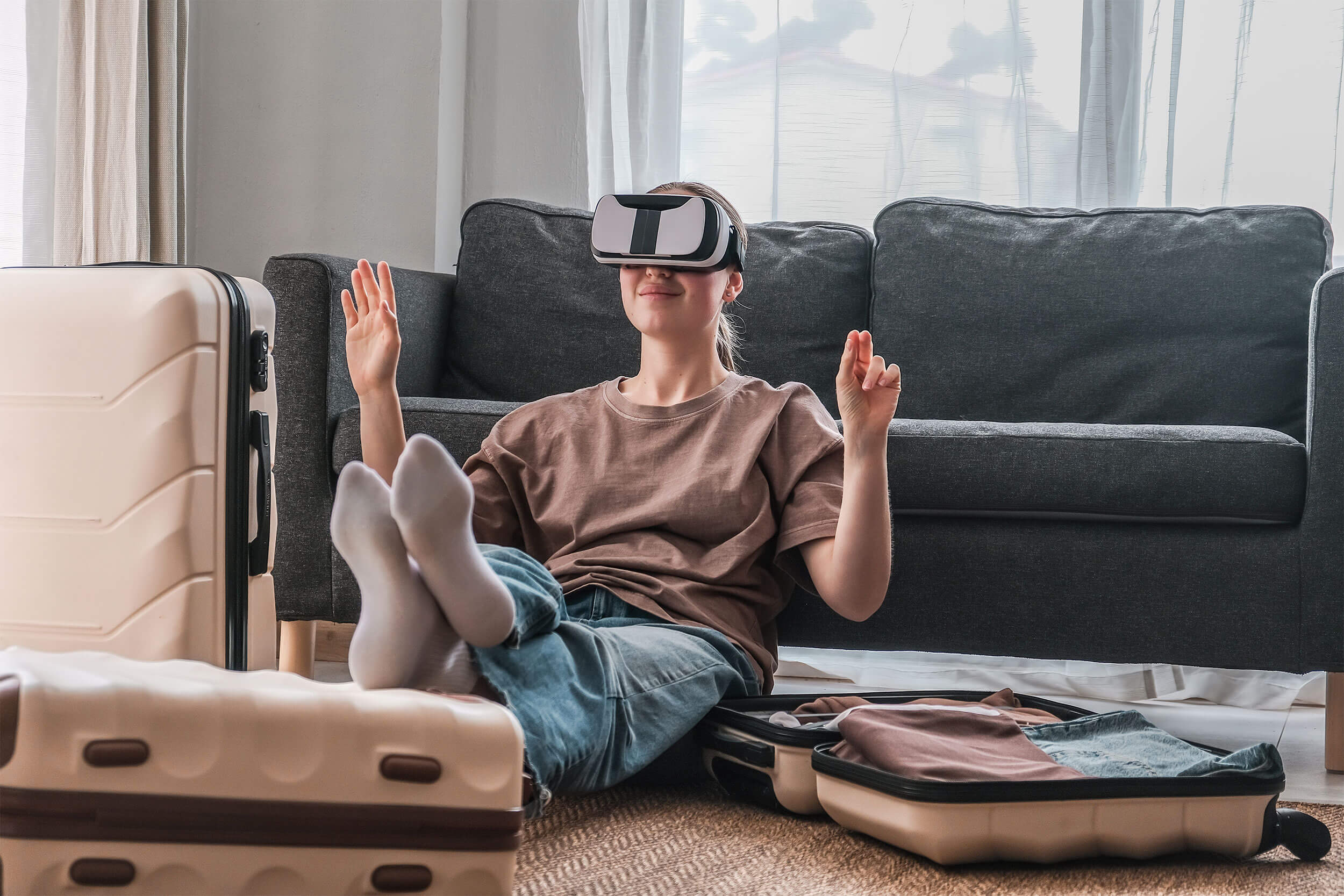
Planning Travel with VR
Travel planning often feels like a gamble. Hotel photos can be misleading, and online reviews are subjective. VR helps eliminate that uncertainty by allowing you to put on a headset and step into a 360° walkthrough, exploring neighborhoods surrounding your accommodation and comparing options in full scale.
According to HSMAI, hotels using VR saw a 135% increase in online reservations. That’s not just because it’s cool tech—it’s because it builds trust.
And as AI interfaces become more natural, users will soon be able to say things like, “Show me Mediterranean towns with beautiful beaches,” and explore a curated selection in VR. Planning will feel like browsing the world in real-time.
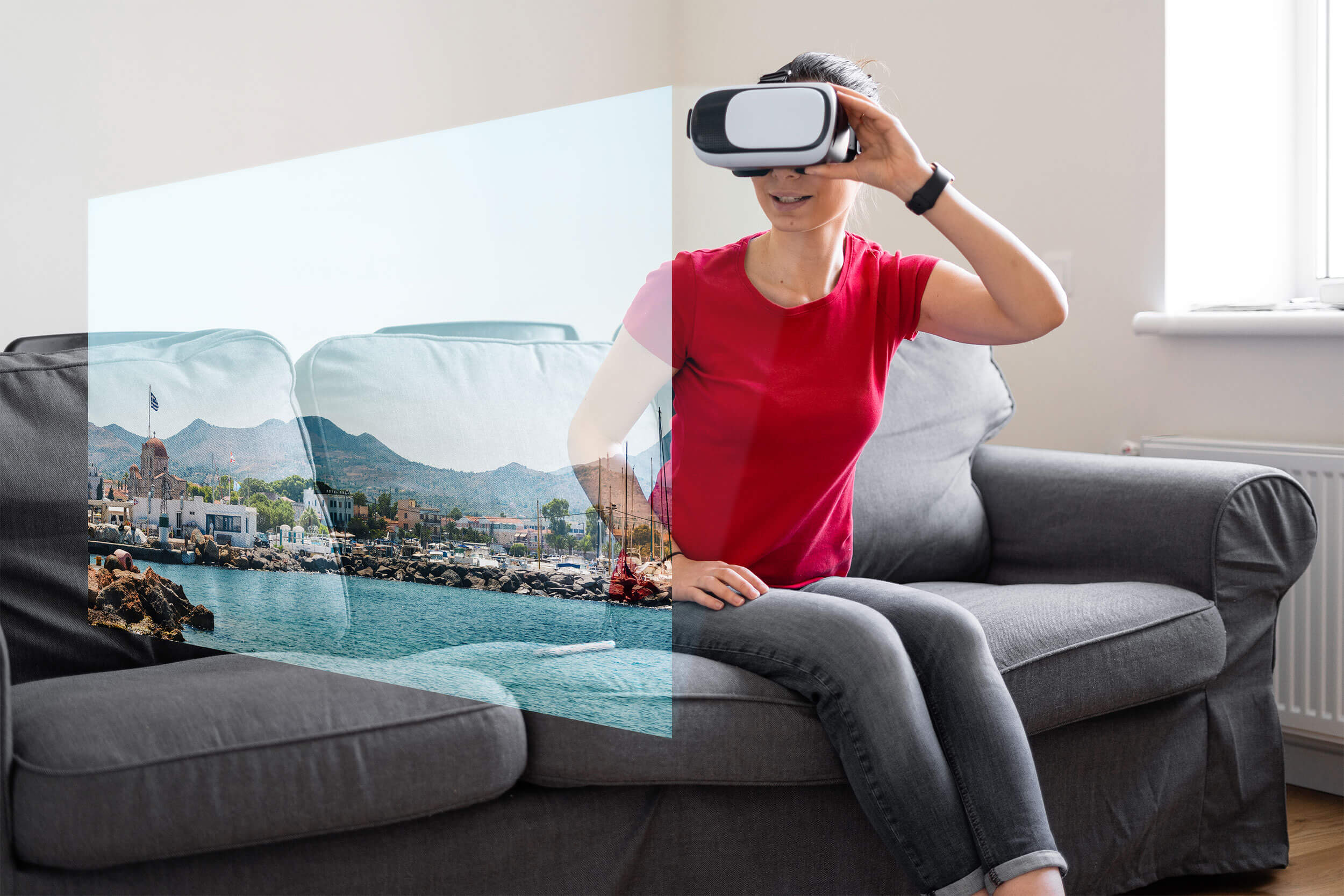
Destination Marketing That Resonates
VR doesn’t replace travel—it fuels the desire for it. For tourism boards, airlines, and hotel chains, immersive storytelling is a new canvas for marketing. RPR’s work with Google Maps during the Paris Olympics 2024 used AR overlays on Eiffel Tower and surrounding areas, blending historical context with live exploration. This same concept can be applied in tourism.
Such experiences create deeper emotional resonance than slideshows or video alone. They also improve conversion rates for long-haul or luxury trips where buyers hesitate without firsthand experience. According to Future Market Insights, the global virtual tourism industry is expected to reach USD 29.1 billion by 2035, with a CAGR of 7.4% during the forecast period. The economic gains from virtual reality in the tourism industry are significant in the long run.
Let’s chat
Not sure where to start? Book a free strategy call with us to get started! No strings attached.
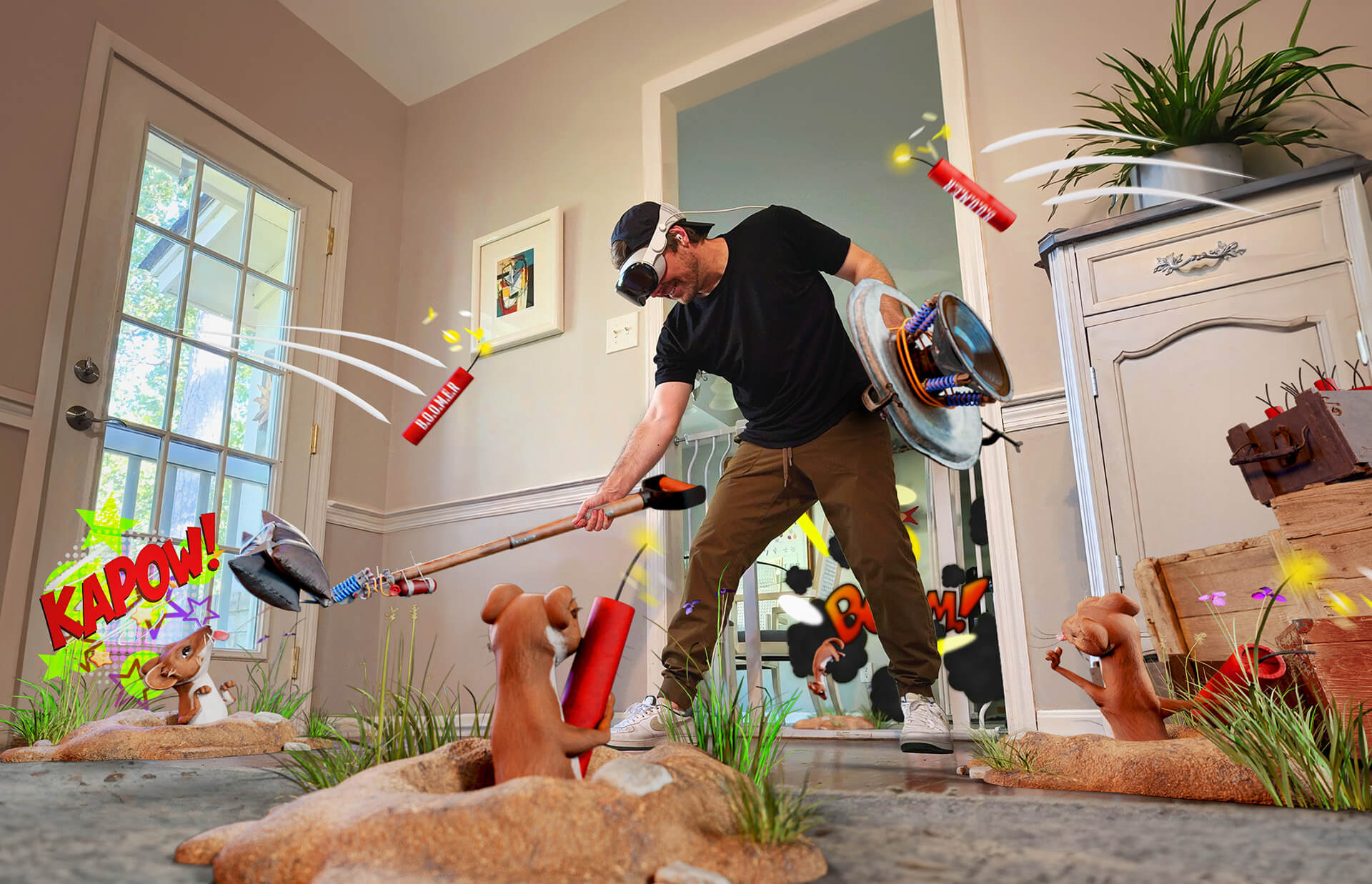
On-Site Immersion: Guiding, Enhancing, and Entertaining
Virtual Reality and Augmented Reality are starting to reshape how travelers engage with destinations in real time. Almost 50% of people would use VR as a tool for choosing their holiday destination for it has the “ability to bring a destination to life”.
One of the most impactful applications is AR tour guides. These AI-powered assistants—accessible via smart glasses or mobile devices—provide real-time translations, contextual information about nearby landmarks, and personalized navigation cues. This seamless guidance adds both educational depth and logistical ease to any travel experience.
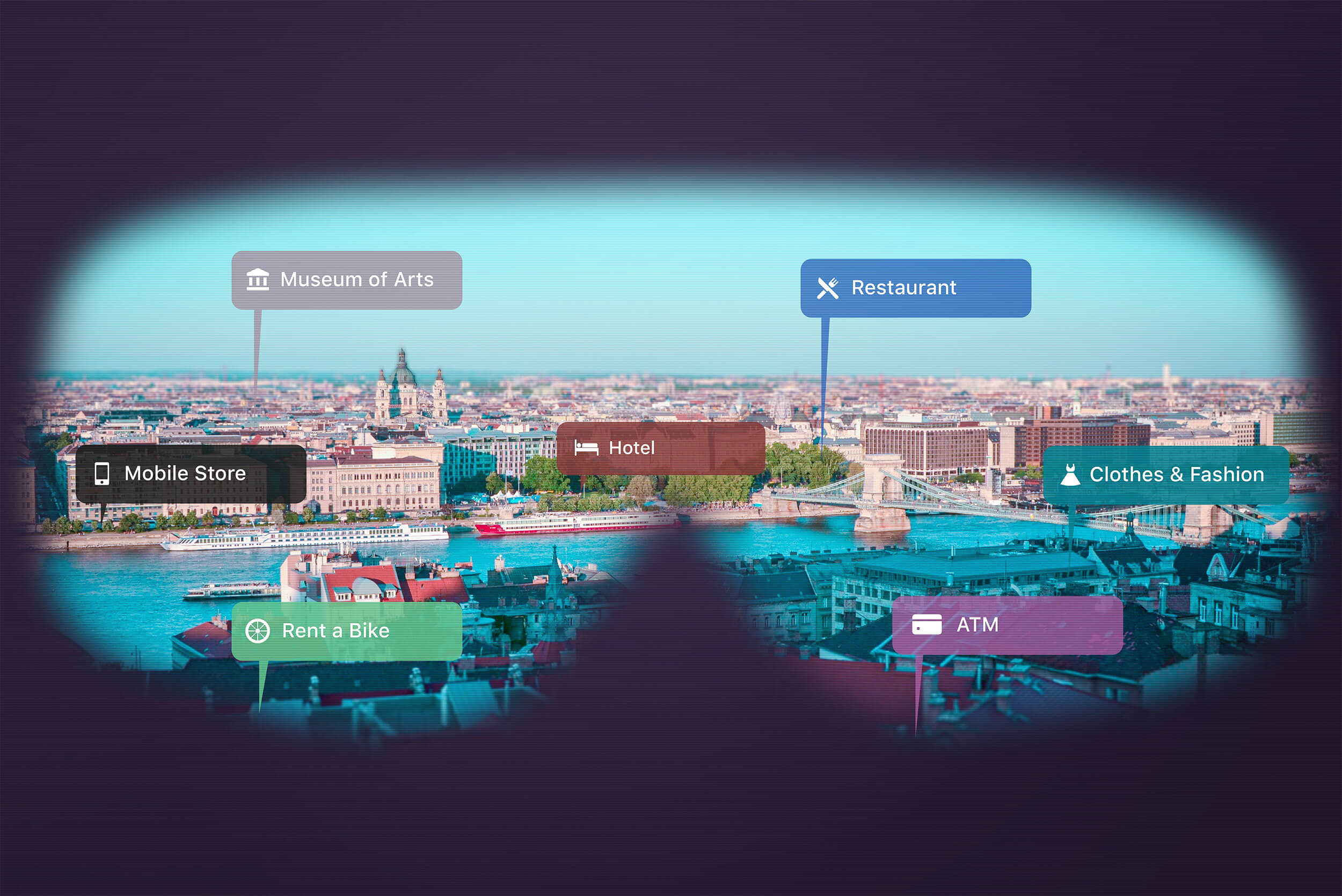
Interactive exhibits are another powerful use case. Museums and cultural sites are now using VR recreations or AR overlays to enhance otherwise static displays. This added layer of immersion allows visitors to engage more meaningfully with content—whether it’s reconstructing ancient ruins, visualizing lost artifacts, or experiencing historical events first-hand.
Hotels and cruise lines are embracing immersive tech to elevate guest experiences as well. VR experiences allow travelers to preview excursions, explore ship amenities, or interact with digital maps of ports and nearby attractions.
An application of virtual reality in tourism is Rebuilding Notre Dame – an experience storytelling the aftermath of the fire that destroyed the famed cathedral’s roof and spire, with an overarching message of Notre Dame rising from the ashes once again. These offerings not only inform guests but also entertain them—making the experience more shareable, memorable, and worth repeating.
Keep up to date
Sign up to our newsletter for exclusive updates and content, delivered directly to your inbox.
Reaching New Audiences Through Accessibility
VR democratizes access by offering virtual visits to rare, difficult, remote or fragile environments. Enabling people with mobility challenges to explore iconic landmarks and create shared virtual spaces for learning or cultural exchanges. National Geographic’s Explore VR app contains some great virtual reality tourism examples and even lets users visit Machu Picchu, the Louvre, or Antarctica from their living room.
Brands that invest in this space are not just expanding reach; they’re building goodwill and inclusivity.
Deployment Channels
VR isn’t confined to tourism expos or trade shows. Its impact stretches across several key moments in the travel journey. On booking platforms, VR previews embedded directly in search results help users compare accommodations side by side, improving confidence and reducing post-booking friction. These previews give travelers a far more accurate feel for their stay than static photos ever could.
At airports and lounges, VR brings experiential marketing and stress relief together. While waiting for flights, passengers can explore destination excursions or relax in immersive environments that ease pre-travel anxiety. These experiences prime travelers for what’s to come, while keeping them engaged with a brand.
Hotels, airlines and cruises also benefit from VR, especially in-room or on-board. Guests can use VR headsets to plan upcoming activities, explore amenities, or engage with branded virtual experiences that keep the excitement going even after arrival. Lufthansa, for example, recently partnered with Meta to offer in-flight VR entertainment, giving travelers immersive escapes even at 30,000 feet (Road to VR, 2025). These touchpoints extend the customer journey in ways that are useful, personalized, and memorable.
How to Make VR for travel with Effective Hardware and Content:
- Photorealistic: Environments should feel true-to-life, not game-like.
- Optimized: Smooth performance across devices, even with heavy assets.
- Interactive: Let users explore and shape the experience.
- Narrative-driven: Incorporate story arcs or guided flow to maintain engagement.
Modern VR experiences should support as many bases as possible to cover a wide audience. RPR ensures content is optimized for all platforms and across:
- Apple Vision Pro for high-res storytelling
- Meta Quest 3 for wireless accessibility
- AndroidXR for broader ecosystem support
- WebXR for browser-based interactions
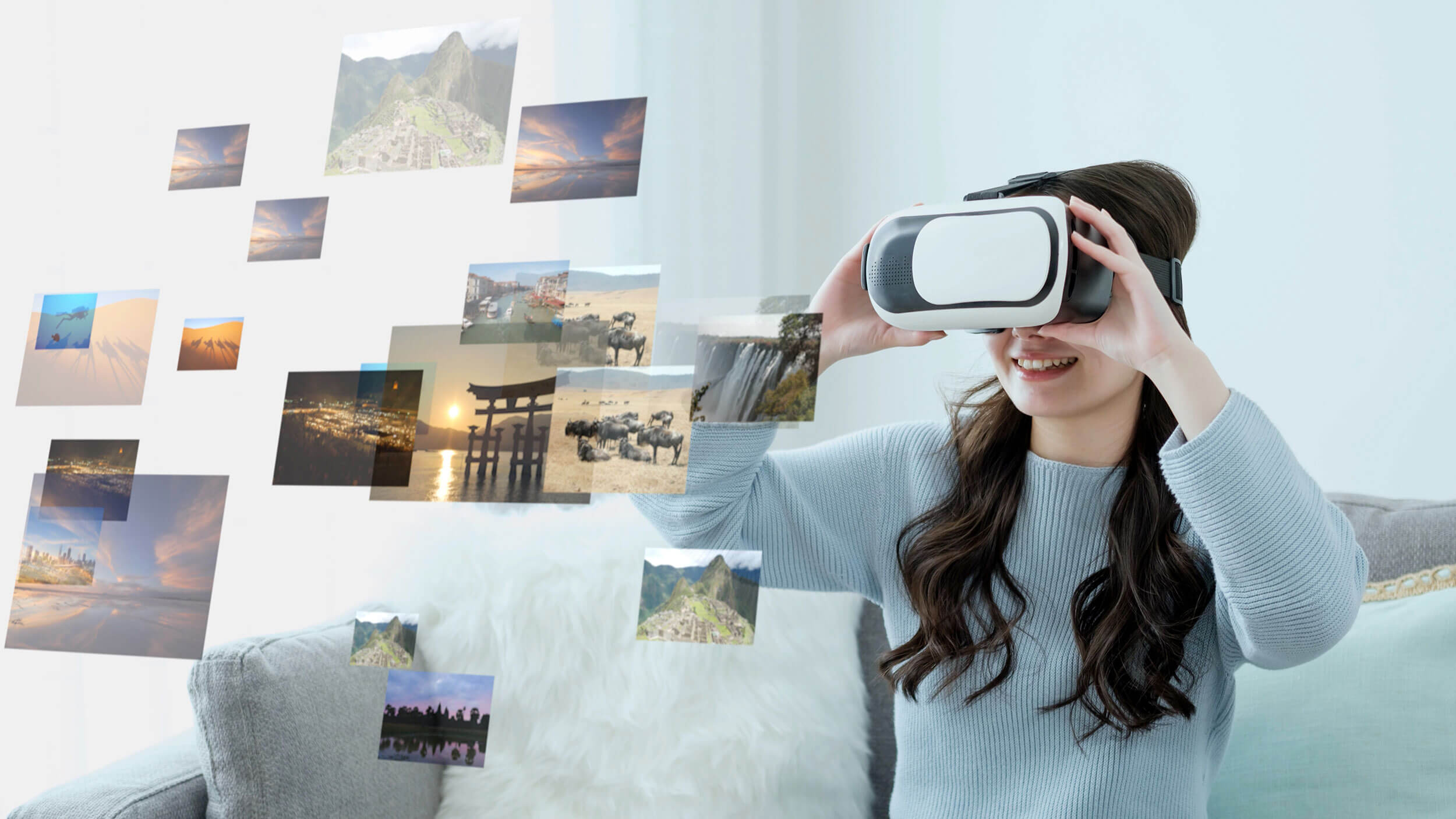
The Future of Personalized Travel with AI and VR
Personal travel agents powered by AI are coming—and VR will be their natural interface. In the near future, a traveler might simply say something like, “Plan me a nature-filled 5-day getaway with a short flight,” and the AI would instantly curate three itinerary options. But the fun part is where each would include immersive VR previews of the destinations: allowing users to explore hotels, walk nearby trails, check weather, and even visualize their entire itinerary.
In this video, you can see a live demo of how Android XR glasses, equipped with Gemini Live AI for real-time assistance, can be used for navigation and to make travel more streamlined.
The experience wouldn’t just inform—it would empower. Travelers could weigh options more confidently and feel an emotional connection to their decision before booking. All of this would take place in a seamless loop inside one VR environment, effectively turning travel planning into a digital experience that’s just as exciting as the trip itself.
In the business of travel, emotion sells. One of the finest benefits of virtual reality in tourism is that it, giving users more control over their travel choices, how they travel, where, etc. are all decided with convenience and confidence. Virtual Reality doesn’t replace the destination—it makes people need to be there. Whether it’s giving hesitant travelers confidence to book, delighting guests on-site, or expanding access to those unable to explore physically, VR is becoming a must-have for tourism brands that want to lead, not follow.
VR applications include virtual hotel tours, immersive destination previews, interactive cultural experiences, and gamified travel planning. Implementing VR can boost bookings by offering immersive previews that build traveler confidence.
FAQs on Using Virtual Reality for Tourism and Travel
How can VR be used in tourism?
Some common applications include virtual hotel tours and immersive destination previews. But the key benefits of Virtual Reality in tourism, as highlighted in this article, extend beyond simple virtual hotel tours. By using VR in tourism you can enhance each stage of the travel journey, while broadening accessibility to the world. This encompasses immersive destination previews that build traveler confidence and desire, interactive cultural experiences that deepen engagement with sites and history, and even gamify travel planning to make the pre-trip phase exciting.
Can you travel the world with a VR headset?
With Meta Quest and Pico VR apps like TriptoVR you can visit to catch a glimpse of world wonders and historic sites, even embark on a journey to places like Venice, Sydney, Istanbul, etc.
How are Virtual Reality tours created?
A 360 virtual tour is created by assembling multiple 360-degree photos, each representing a different space or viewpoint. These images are then connected together to enable seamless movement within the virtual space in headsets or even developed for flat screens using WebAR.
References
- https://hotelgrowth.agency/2025/03/19/how-virtual-reality-tours-can-increase-bookings-for-your-hotel/
- https://rockpaperreality.com/our-work/first-of-its-kind-ar-content-launch-in-google-maps-in-collaboration-with-google-arts-and-culture/
- https://immersionvr.co.uk/about-360vr/vr-for-tourism/
- https://www.futuremarketinsights.com/reports/virtual-tourism-market
- https://www.meta.com/blog/virtual-vacation-11-vr-apps-and-films-that-let-you-travel-the-world-from-home
- https://rockpaperreality.com/our-work/lenovo-formula-1-vrx-experience/
- https://www.roadtovr.com/meta-quest-3-in-flight-entertainment-airlines/
- https://rockpaperreality.com/insights/extended-reality/where-to-start-with-the-apple-vision-pro-and-how-it-may-benefit-your-brand/
- https://rockpaperreality.com/insights/virtual-reality/how-virtual-reality-is-transforming-museums/
